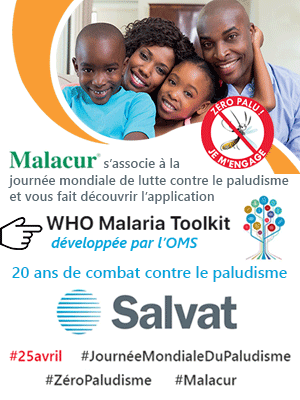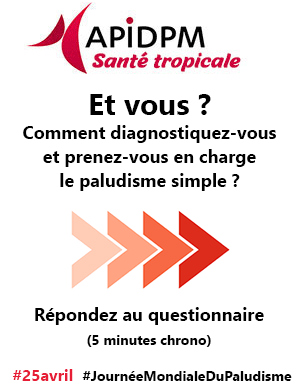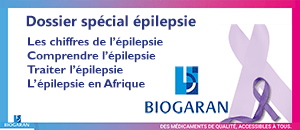← retour Santé tropicale
Accès aux sites pays ![]()
![]() BENIN
BENIN![]() BURKINA FASO
BURKINA FASO![]() CAMEROUN
CAMEROUN![]() CENTRAFRIQUE
CENTRAFRIQUE![]() CONGO
CONGO![]() COTE D'IVOIRE
COTE D'IVOIRE![]() GABON
GABON
![]() GUINEE
GUINEE![]() MADAGASCAR
MADAGASCAR![]() MALI
MALI![]() R.D. CONGO
R.D. CONGO![]() SENEGAL
SENEGAL![]() TOGO
TOGO
← retour Santé tropicale
Accès aux sites pays ![]()
![]() BENIN
BENIN![]() BURKINA FASO
BURKINA FASO![]() CAMEROUN
CAMEROUN![]() CENTRAFRIQUE
CENTRAFRIQUE![]() CONGO
CONGO![]() COTE D'IVOIRE
COTE D'IVOIRE![]() GABON
GABON
![]() GUINEE
GUINEE![]() MADAGASCAR
MADAGASCAR![]() MALI
MALI![]() R.D. CONGO
R.D. CONGO![]() SENEGAL
SENEGAL![]() TOGO
TOGO

Publié dans Médecine d'Afrique Noire 6812 - Décembre 2021 - pages 680-686
 Hépatite virale B dans le bassin arachidier du Sénégal
Hépatite virale B dans le bassin arachidier du Sénégal Auteurs : A.A. Dia, D.G. Dia, S. Lo, A. Dieye, N. Gueye-Babou, S. Ba, N.M. Dia-Badiane - Sénégal
Introduction : Le Sénégal fait partie des zones de forte endémicité de l’infection au virus de l’hépatite B avec une prévalence nationale de 10%. Cette prévalence est variable d’une région à une autre malgré l’intégration de la vaccination contre l’hépatite B dans le programme élargie de vaccination depuis 20 ans. Notre étude avait pour objectif de déterminer le profil épidémiologique, et les caractéristiques diagnostiques, thérapeutiques et évolutives de l’infection au VHB dans le bassin arachidier du Sénégal.
Méthodologie : Il s’agit d’une étude rétrospective, descriptive sur consultation de dossiers de malades suivis en ambulatoire dans le service de Médecine Interne du Centre Hospitalier Régional de Kaolack sur la période allant du 2 janvier 2009 au 31 décembre 2018. Nous avons inclus tous les patients âgés de 15 ans et plus qui avaient une positivité de l’AgHBs.
Résultats : Nous avons colligé 757 dossiers de patients atteints d’hépatite virale B sur 6246 patients suivis en ambulatoire, soit une prévalence hospitalière de 12,1%. L’âge moyen des patients était de 31 ans ± 10,8 avec des extrêmes de 15 et 79 ans. La tranche d’âge [15-35 ans] ans était majoritairement représentée (68,9%) avec un sex-ratio de 1,2 en faveur des hommes. Les circonstances de diagnostic étaient dominées par le don de sang (55,9%), la découverte fortuite (21,5%), les complications (11,7%) et le bilan prénatal (10,9%). Les catégories socio-professionnelles les plus touchées étaient les ouvriers (38%) et les commerçants (20%). Il y avait 684 cas d’hépatite chroniques, 31 cas de cirrhose et 42 cas de carcinome hépatocellulaire. Chez les patients atteints d’hépatite chronique, la charge virale moyenne était de 7203115,5 UI/ml ± 57447438 UI/ml. Plus des deux tiers des patients (71,1%) ont été perdus de vue après le diagnostic. Seuls 79 patients (10,4%) ont pu bénéficier d’un traitement antiviral à base de Ténofovir 300 mg par jour avec une durée moyenne de 24,6 mois ± 15,7 mois et un taux d’observance de 91,1%.
Conclusion : La bassin arachidier du Sénégal reste un cluster de l’infection au virus de l’hépatite B. Le taux élevé de perdus de vue dans notre étude témoigne de la nécessité de développement de stratégies nationales de prise en charge préventive et curative afin de rompre la chaine de transmission.
Introduction: Senegal is one of the areas of high endemicity of hepatitis B virus infection with a national prevalence of 10%. This prevalence varies from one region to another despite the inclusion of hepatitis B vaccination in the expanded immunization program for 20 years. Our study aimed to determine the epidemiological profile, and the diagnostic, therapeutic and evolutionary characteristics of HBV infection in the groundnut basin of Senegal.
Methodology: This is a retrospective, descriptive study on consultation of patient files followed on an outpatient basis in the Internal Medicine department of the Kaolack regional hospital for the period from January 2nd, 2009, to December 31st, 2018. We included all patients aged 15 years and older who were HBsAg positive.
Results: We collected 757 files of patients with viral hepatitis B out of 6,246 patients followed on an outpatient basis, ie a hospital prevalence of 12.1%. The mean age of the patients was 31 ± 10.8 years with extremes of 15 and 79 years. The age group [15-35 years] was predominantly represented (68.9%) with a sex ratio of 1.2 in favor of men. The diagnostic circumstances were dominated by blood donation (55.9%), incidental discovery (21.5%), complications (11.7%) and prenatal workup (10.9%). The most affected socio-professional categories were workers (38%) and traders (20%). There were 684 cases of chronic hepatitis, 31 cases of cirrhosis and 42 cases of hepatocellular carcinoma. In patients with chronic hepatitis, the mean viral load was 7203115.5 IU/ml ± 57447438 IU/ml. More than two-thirds of patients (71.1%) were lost to follow-up after diagnosis. Only 79 patients (10.4%) were able to benefit from an antiviral treatment based on Tenofovir 300 mg per day with an average duration of 24,6 months ± 15,7 months and an adherence rate of 91.1%.
Conclusion: The groundnut basin of Senegal remains a cluster of hepatitis B virus infection. The high rate of lost to follow-up in our study testifies to the need for the development of national preventive and curative management strategies to break the transmission channel.
Cet article est actuellement coté ![]() (1,0 étoiles) par les abonnés de Médecine d'Afrique Noire.
(1,0 étoiles) par les abonnés de Médecine d'Afrique Noire.
Il a été consulté 5853 fois, téléchargé 3 fois et évalué 1 fois.
Aucun commentaire n'a encore été ajouté à propos de cet article
Restez informés : recevez, chaque mercredi, la lettre d'informations de Santé tropicale. Inscriptions
Ce contenu gratuit vous est destiné :







![]() Adresse
Adresse
![]() Téléphone
Téléphone
![]() Contactez-nous
Contactez-nous
Actualités
Articles médicaux